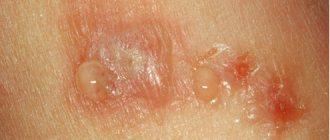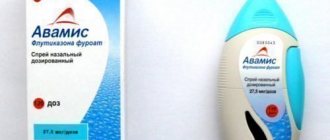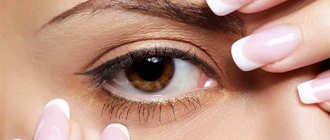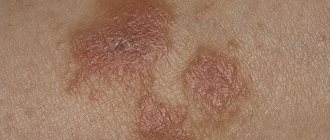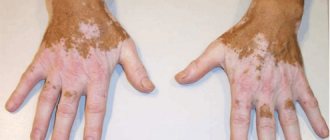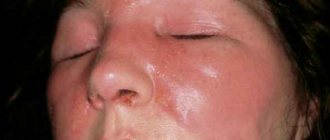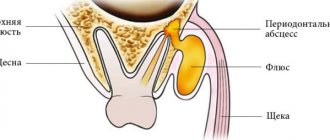In the medical literature, senile warts are called verrucae in the plural and wart (verruca) in the singular. They are caused by infection with the human papillomavirus (HPV). However, senile warts are not related to those skin formations that appear on the human body after 40, since they are provoked not by a virus, but by other factors. The resulting papules are benign neoplasms, but in old age they can degenerate into malignant ones.
The growths are called senile warts or seborrheic keratosis, keratomas. People who have crossed the 50-year mark gradually undergo irreversible changes in their bodies associated with age-related processes. For example, the surface of the epidermis becomes too dry, the skin begins to lose its elasticity and ceases to be elastic. And if the level of cholesterol in the blood also increases, then the likelihood of the formation of seborrheic warts increases several times.
Scientists today are 100% unable to give a clear explanation of what factors provoke the appearance of such papillomas. However, there are certain reasons that contribute to the formation of warts:
- predisposition transmitted at the genetic level;
- the body’s susceptibility to seborrheic formations, this mainly concerns oily seborrhea;
- prolonged exposure to direct sunlight, especially for summer residents;
- lack of vitamins in the body of an elderly person;
- frequent consumption of animal fats and lack of vegetable oils in food.
Typically, senile warts do not cause pain and an elderly person may not feel the process of their formation. Initially, the papule occupies 1-3 mm of the skin, but over time such nodules tend to grow together into large tumors. Their localization is mainly observed on the torso; occasionally, seborrheic keratomas form on the face, lips, and oral mucosa. If such papillomas appear on the folds of the neck, they often look like papillae.
Characteristics of neoplasms
Senile keratoma is a benign neoplasm of the epidermis, which occurs with increased growth of its surface layers. Skin cells thicken and keratinize, causing pigmented plaques, growths or nodules with clearly defined edges to appear.
The places where keratoma is localized are the neck, face, hands, forearms, as well as open areas of the skin of the body.
The name of this tumor is due to the fact that it forms in people over 50 years of age. Those with dry skin are at particular risk.
On this topic
- Keratosis
All about seborrheic keratosis
- Inna Viktorovna Zhikhoreva
- September 27, 2020
Sometimes neoplasms disappear on their own, without treatment, but there is also a risk of their degeneration into a malignant tumor, which is fraught with the development of squamous cell carcinoma, characterized by an aggressive course. The probability of such a complication is 10-15%.
Age-related keratomas are growths on the skin one to two centimeters in size that resemble a raisin in appearance.
Age-related hyperkeratosis is not caused by viruses or infections. This type of wart is not spread from one person to another.
When is medical help needed?
When the first signs of seborrheic keratosis appear, you should immediately consult a doctor to exclude the diagnosis of cancer.
If the benign nature of the keratoma is established, the doctor recommends treatment of the wart in the following cases:
- skin growths cause discomfort or itching (spread on the face, injury from clothing);
- increased risk of warts turning into skin cancer;
- presence of manifestations;
- blackening of the growth;
- active proliferation of keratomas.
If you don’t yet know which doctor treats warts, then be sure to read the material at the link.
Why do they appear?
Age-related skin tumors occur due to cellular disorders of the skin that occur in the presence of risk factors. These include:
- prolonged action of direct ultraviolet rays on the epidermis;
- deficiency of vitamins and microelements in the body;
- predominance of animals and lack of vegetable fats in the body;
- decreased immunity;
- genetically determined predisposition to skin tumors;
- disorder ;
- prolonged pressure or friction of the skin due to too tight clothing;
- hormonal disorders;
- long-term use of antibacterial agents, as well as diuretics;
- irritation of the skin by chemicals .
On this topic
- Keratosis
Let's find out what keratosis is
- Inna Viktorovna Zhikhoreva
- August 17, 2020
There is a high probability of neoplasms appearing in individuals whose skin has a large number of freckles, nevi and age spots, and there is also a tendency for their number to increase.
The peculiarity of senile keratoma is its slow development and long course, as well as the likelihood of spontaneous disappearance.
Characteristic manifestations
Keratosis is expressed in the appearance of spots on the skin, which over time become coarser and become covered with a dense crust. The characteristic signs of the pathological process depend on the form in which it manifests itself.
Senile keratoma
The beginning of its development is expressed in the formation of a light yellow or brown spot on the skin, which resembles a hyperpigmented area.
As the spot develops, it increases in size and acquires an intense color - burgundy, brown or gray. The structure of the keratoma also changes: it is characterized by looseness and softness.
Protrusions, depressions and tubercles are observed on the surface of the neoplasm; it becomes rough and flakes off, which is manifested in the separation of small gray scales. The usual size of a senile keratoma is about 1-2 cm in diameter, but sometimes this figure reaches 6 cm.
This type of neoplasm often causes bleeding during injury and the appearance of pain.
Horny keratoma, or cutaneous horn
In this case, the skin growth looks like a conical formation, significantly rising above the surface of the dermis and reaching 3-5 cm in length. The surface of the formation is hard. The danger of this form is that it most often causes malignancy of the keratoma.
Solar
Keratomas of this type are located on open areas of the skin that are most exposed to direct sunlight. New growths are pigmented areas that are gradually covered with gray scales.
Solar keratoma is considered a precursor to a cancerous condition. Its danger lies in the fact that the neoplasm can quickly and imperceptibly turn into a malignant form.
Seborrheic
This skin tumor develops rapidly: the pigmented spot that initially appears quickly increases in size, which is accompanied by itching, burning and pain. Individual sections of the surface of the neoplasm separate from time to time, and a bleeding wound appears in their place.
It not only bothers the patient, but also often causes infection to enter the body. Seborrheic keratoma rarely progresses to the stage of squamous cell carcinoma, but in all cases it becomes a source of inflammation of the superficial and deeper layers of the skin.
Benign keratomas degenerate into malignant ones under the influence of factors such as heredity, chemical and mechanical damage to skin areas.
Reviews
Ilya, 27 years old, Surgut: For me, keratomas sometimes appear, then they deign to go away. I took pills for immunity. Sometimes I didn’t do anything - because they were on their backs, they would come and then they would pass, I didn’t even really notice. Once in the pool, when I was vacationing in the Southern Administrative District, I damaged the keratoma, it began to hurt and bleed, my wife suggested treating it with hydrogen peroxide, and the next day - see a doctor. They said that the stage was advanced and there was a danger, so I signed up for radiation therapy (resurfacing method). In a couple of procedures, everything was removed so that nothing was visible.
Marianna, 25 years old, Tver: Cryodestruction is probably the best treatment method, because it is inexpensive, comfortable, and effective. After six days there were no growths left on the skin - they all fell off. There was only a reddish spot (that’s why it went away). Keratoma removal with liquid nitrogen was carried out at a cosmetology center where a good friend works, and they did it at a discount.
Veronica, 35 years old, Chita: A growth appeared, I did radio wave therapy on the doctor’s recommendation - it helped. The keratomas were in a very delicate area, so I wanted to get rid of them as quickly as possible. There was no pain, I checked it carefully after removal - there were no scars left. True, in my opinion, the skin took quite a long time to recover, but the main thing is that everything went away, swelling did not appear.
Methods for treating keratosis
Treatment of senile keratoma involves its removal using radical methods. This can be done using the following manipulations:
Laser removal of tumors
This method is called gentle because after surgery the skin recovers quickly and the amount of damage caused is minimal. Using a laser, tissues that have undergone pathological changes are burned and evaporated.
After the operation, a crust remains at the site of the keratoma , which after some time separates on its own, revealing healthy skin. The advantages of the method are painlessness and the absence of postoperative scars, as well as the absence of the risk of relapse.
Cryodestruction
In this case, the keratoma is treated with liquid nitrogen, which dissolves the tissue. A dry papule remains at the site of the neoplasm, which separates on its own. The effectiveness of the method is high, but there is a risk of relapse.
Radio wave excision
The method is based on non-contact thermal exposure. The advantages of the method are the absence of scars, rapid healing, low probability of recurrence of keratoma.
Electrocoagulation
Benign skin tumors are treated with high-frequency current. The skin is excised with an electric scalpel, while adjacent tissues are also subject to minor damage. After the operation, minor scars remain on the skin, which disappear over time.
Destruction with acids
Glycolic acid, as well as some types of cytostatics, are applied to the surface of the neoplasm, due to which the growth of the keratoma is stopped and the cells are destroyed.
Classic surgery
This method is required in the case of large tumors that are characterized by a rapid and aggressive course. The keratoma is cut under local anesthesia. After the operation, stitches are placed, so scars remain on the skin.
In addition to radical methods, conservative therapy methods are used to treat keratomas. To increase immunity, the patient is prescribed ascorbic acid, as well as intramuscular administration of vitamin B12.
How to get rid of it?
It is impossible to prevent the development of actinic keratosis , but it is possible to stop the growth of skin growths.
How to remove skin tumors:
- traditional methods of therapy;
- use of medications: tablets and injections for warts;
- removing warts at home or in a clinic.
If you are planning to treat warts, then you should know:
- How to draw houses on your finger?
- How to get rid of hanging growths?
- Can warts go away on their own?
- Is it possible to cut them?
- Is it possible to remove growths, including during pregnancy?
- Is it possible and how to remove a wart in 1 day?
Or maybe you don’t have a wart at all? Then how to define it? And how is it different from papilloma? Find out more in our works.
Traditional therapy
If age-related keratomas appear, treatment with folk remedies can help.
- Potato compress . Grate the potatoes on a fine grater, place the pulp on the warts, and secure with a bandage. Change the bandage every hour for 3 to 4 hours. Potatoes can be replaced with crushed aloe leaves, Kalanchoe, and grated garlic.
- Plant juice . Mix garlic juice with honey (3:1), apply the mixture to the warts several times a day. Keratomas can also be treated with dandelion juice.
- Ammonia . Mix a pinch of flour with ammonia, apply the resulting cake to the skin growths on your hands, secure with a bandage. Apply once a day until disappearance.
You can get rid of warts at home by using:
- iodine;
- Castor oil;
- vinegar;
- celandine;
- as well as hydrogen peroxide;
- thread;
- and other means.
Medications
External hormonal drugs such as Advantan, Akriderm and Flucinar are prescribed exclusively by a doctor.
Their main goal is to reduce inflammation in pathological areas of the skin and reduce the growth of epidermal cells.
Taking large doses of ascorbic acid (vitamin C) prevents the formation of new keratomas.
Excessive intake of vitamin C into the body over a long period of time can lead to side effects : urolithiasis, stomach diseases.
Among the pharmaceutical remedies for warts you can also use:
- Freezing with nitrogen using Wartner Cryo or Cryopharma.
- Cauterization of skin growths using lapis pencil or SuperClandestine.
- Special patches such as Salipod.
- Ointments. We recommend trying Viferon.
Find more pharmacy and folk remedies for warts here.
Possible complications
A dangerous complication of keratoma is the likelihood of it developing into a malignant form. Most often, the cause of the degeneration of a neoplasm into a cancerous tumor is the solar and horny varieties of keratoma.
In addition, the wound surfaces of senile keratomas are a favorable environment for herpes infection and human papillomavirus, through which they penetrate the body.
If the neoplasm is subjected to mechanical damage, fungal or bacterial infections can also penetrate through it, causing microbial eczema and pyoderma.
What is a keratoma?
Skin lesions that are brown or dark brown in color are called keratomas. Keratomas are characterized by growth. Initially, the formations look like freckles or age spots, over time they grow, reaching a size of 1-2 cm. The spots gradually become horny, peel off, and the color approaches black. Neoplasms can be single, but sometimes their number reaches several dozen. Frequent locations are the arms, neck, back, and less commonly appear on the lower extremities.
Dermatologists say the main reason for the formation of keratomas is prolonged exposure to the sun. Ultraviolet rays create favorable conditions for the keratinization of epithelial cells, promoting the development of tumors.
The disease is asymptomatic, but there are cases when keratomas itch and hurt. The consequences are terrible - the tumor develops into a malignant one, which occurs in 7-15% of cases. Therefore, you should not be careless about this disease. Some formations tend to peel off and fall off on their own. But you should definitely consult a doctor.
It is worth thinking about removing the keratoma if it grows, bleeds, or becomes injured.
Prevention of benign tumors
To reduce the risk of the appearance and development of senile keratomas, as well as to prevent the likelihood of their recurrence, it is necessary:
- do not spend too much time exposed to sunlight . As a last resort, it is necessary to use sunscreen;
- visit a dermatologist if there is a predisposition to the development of skin tumors;
- avoid contact with aggressive chemicals ;
- wear clothes that do not restrict movement and do not cause skin friction;
- exercise ;
- follow the principles of rational nutrition.
What is the mechanism for removing keratomas during cryodestruction?
The destruction of cells by keratosis occurs gradually. When cooled with liquid nitrogen (evaporation temperature is -196 °C), the liquid part of the cells and intercellular substance turns into ice; upon thawing, cells and intercellular connections are gradually destroyed, blood circulation in the keratome is disrupted, and a process of slow tissue death occurs. Keratomas turn red after freezing, sometimes a bubble appears, which gradually shrinks and spontaneously rejects along with the destroyed tissue. The process of death and rejection of the keratoma after cryodestruction lasts from 2 to 4 weeks.
